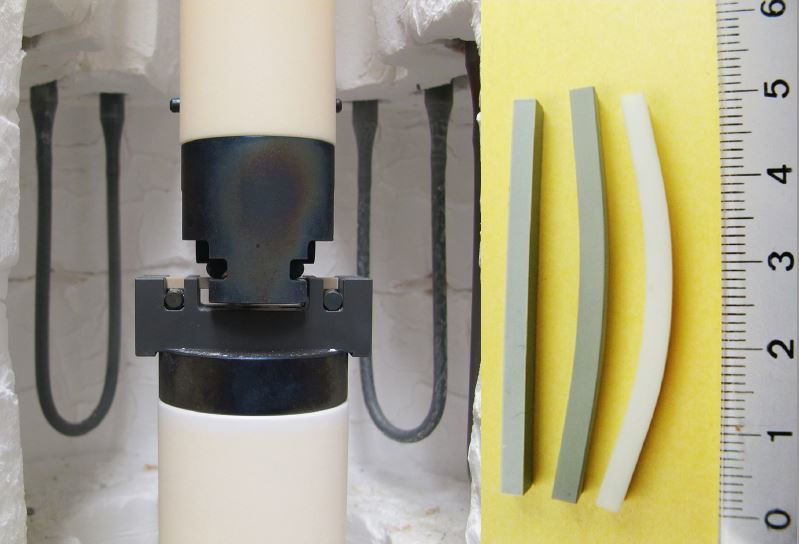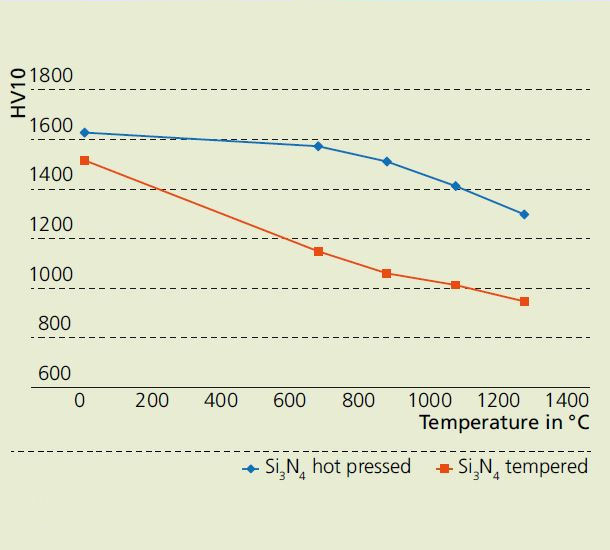

Fraunhofer IKTS develops ceramic materials for hot gas path components of gas turbines. High efficiency can be attained due to the high thermal stability of ceramic materials. For evaluation of material reliability, test methods with which key material parameters (strength, oxidation resistance, and corrosion resistance) can be determined precisely up to the highest application temperatures are needed.
The mechanical material properties were determined within the scope of various development projects through extensive strength tests under bending and compression loads. Measurement of fracture toughness on samples prepared with defects of defined geometry served toward evaluation of the crack sensitivity of the materials.
Test machines equipped with different furnaces for measurements in air up to 1600 °C or in a vacuum chamber up to 1400 °C for materials of low oxidation resistance are available. Young‘s modulus, which is required for component design, can be determined up to high temperatures through in-situ measurement of sample deformation by ceramic tipes. High-temperature creep testing is performed at a constant bending stress. The failure mechanism is then studied in detail in terms of fracture behavior, dynamic fatigue, and creep for evaluation of the fatigue limit and adaptation of the microstructure to the given requirements. For meaningful strength data for materials showing a statistical scatter in strength to be obtained, a large number of individual tests (30) and calculation of the Weibull modulus are required.
For applications such as cutting tools or special seals for valves in power plants, the service life of a material is strongly influenced by its wear resistance and hardness. Testing of hardness at room temperature is insufficient for evaluation of wear resistance at higher temperatures due to the additional effects of frictional heat or direct contact with hot media. This problem has been solved by a hot hardness tester developed at Fraunhofer IKTS to measure Vickers hardness up to 1500 °C (high vacuum). This tool is very useful in the development of materials with high wear resistance for applications with combined thermal and abrasive stress. Thanks to a high load range down to small test loads (HV0.2 to HV30), local characterization, for example, hardness line scans of graded materials or wear-resistant coatings, is possible. Flexible temperature control in combination with in-situ hardness testing is useful for optimization of thermal treatments.
Services offered
- Measurement of strength, fracture toughness, and Young‘s modulus between 20 and 1600 °C
- Measurement of Vickers hardness between 20 and 1500 °C
- Mechanical tests according to customer requirements